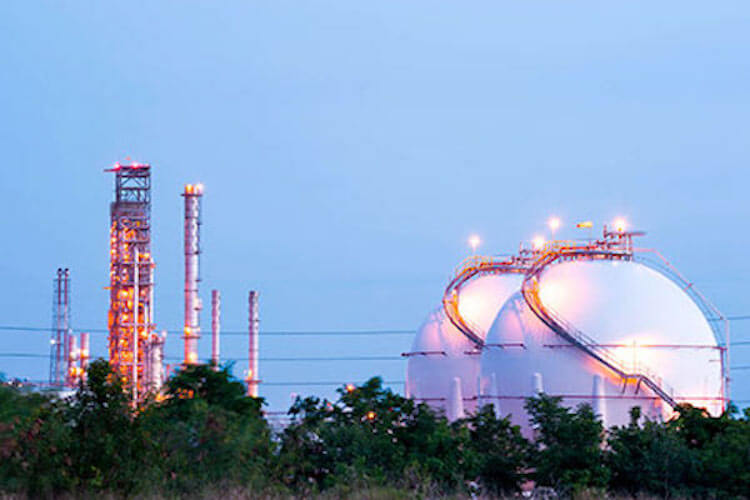Tellurian Discusses Geopolitics and Access to LNG Across the Globe
This past October, key stakeholders across the energy industry gathered to exchange ideas, discuss emerging challenges and engage in predictions about future trends. Among the speakers was Meg Gentle, President and Chief Executive Officer of Tellurian Inc. With Meg’s extensive background in finance and strategic planning, she delivered high-level insights and points of discussion in an engaging presentation to those in attendance. 
We are pleased to share our recent conversation with Meg, covering geopolitical discussions around trade and tariffs, and a glimpse into where LNG is likely headed in the near future.
ED: How has the partnership between natural gas and renewables been impacted by geopolitical policy and, ultimately, by trade wars that limit the free flow of natural gas?
MG: I think that the discussion over trade and tariffs has definitely changed some of the momentum of selling gas between U.S. and China. The tariffs themselves are part of a much larger geopolitical discussion that is more important than just gas. Ultimately, the gas market will still continue to grow in China, and elsewhere, and that market will need supplies that come from around the world. Some of the flow may be redirected temporarily, but we expect that the trade discussions will get rationalized over time.
ED: How have these recent trade discussions and hindrances altered plans for Tellurian?
MG: We are going to be producing gas from driftwood in 2023, so a lot will change between now and then. By that time, we expect that China will be on its way to becoming a hundred-million-ton market.
It will be about 25 percent of the LNG business overall.
ED: Have you seen the U.S. administration support the infrastructure of natural gas to balance the projected annual increase in LNG demand? Where is there room for improvement from the administration?
MG: The administration supports infrastructure and investment by the private sector by streamlining the regulatory process, reducing the time it takes to permit projects, and thereby facilitating an investment. One of the great things about the U.S. is that the regulatory process is very procedural. There is a certainty in the expectation for how it works, and everything the administration has done to streamline regulation has been very positive for infrastructure development.
We are always in dialogue with the administration and with FERC about efficiency in the FERC process. There is a need for about 170 billion dollars of infrastructure investment in natural gas, both for pipelines and export facilities. In order to support the increase in production that we are expecting to occur between now and 2025, much of that gas will be associated with oil production. We need from a policy, regulatory and private investment standpoint to continue to support additional pipelines in the Gulf Coast and export terminals that bring new markets. This is necessary for the nation to avoid flaring, and to continue to support oil production.
ED: By 2019, the U.S. will soar past 13 other exporters and become the third largest exporter in the world. Asia is currently the largest importer of U.S. LNG and Europe is planning to import U.S. LNG over the next several years. What are the variances in liquefaction demand in Asia as compared to Europe?
MG: Asia today contains about 75 percent of worldwide LNG demand. Europe is a lot more seasonal. It meets its requirements for natural gas during peak periods and tries to balance pipeline capacity and LNG imports. Europe is really two separate markets, with Southern Europe being much more LNG dependent, and Northwest Europe being much better pipeline interconnected. Because of this, the variance from pipeline supplies versus LNG supplies is bigger in Europe than in Asia.
We do expect Asia to continue to be about three-quarters of the LNG market. Frankly, we expect that prices will rationalize around the world as LNG starts to trade as its own commodity, and it becomes decoupled from crude oil.
ED: With 2019 quickly approaching, and new strategic partners coming on board for Haynesville, what are the big milestones that Tellurian currently has underway?
MG: We will be finishing the FERC permit at the beginning of 2019. The final environmental impact statement is scheduled for January 18. This will put us in position to reach our final investment decision on the project and begin construction in the first half of 2019. This also puts us on schedule to complete Driftwood LNG by 2023 and begin sending LNG to the world.
We do have an EPC contract with Bechtel, which I’m excited about. Bechtel has demonstrated its experience in the Gulf Coast. Both its Sabine Pass and Corpus Christi facilities are being built on time, or ahead of schedule, and under budget. Our contract was signed at the end of 2017, and it remains in place until we finish the permitting work. It is a fixed-fee contract of 15.2 billion dollars, which is equal to 550 dollars per ton. This is a guaranteed price by Bechtel, as the contract is guaranteed for price, schedule, and performance. It is exciting for Tellurian to be working with Bechtel at this time, with a project underway.
ED: Thank you for participating at the North American Gas Forum this past October. In your opinion, what were the most interesting takeaways and challenges from the discussions at the forum?
MG: The Forum is always an excellent avenue for us to come and talk to both policymakers and thought leaders in Washington D.C. It unites energy experts from the Administration, think tanks, and industry. This is a nice mix of folks that can anticipate things that we need to be changing to meet the demands of the market. Overwhelmingly, the conclusion of the conference was that natural gas is becoming much more of its own commodity on a worldwide basis. The trading of natural gas indexes and LNG indexes worldwide is allowing LNG to become more flexible, and more responsive to the needs of both the seasonal power generation markets. In fact, a lot of the growth in Asia is coming from inelastic demand sources, which is leading to residential and transportation growth as we’ve never experienced before. This means that demand has been underestimated, as the liquidity in the market facilitates even more growth than was anticipated. It was really encouraging to debate among all the constituents there. This is the value and the wealth of discussion that I think the forum brings.
—
Our organization, Energy Dialogues, creates opportunities throughout the year to bring together an impressive line-up of industry decision makers from across the energy industry for high-level discussion and debate. To stay connected with the latest news and upcoming programs, please join our mailing list.






